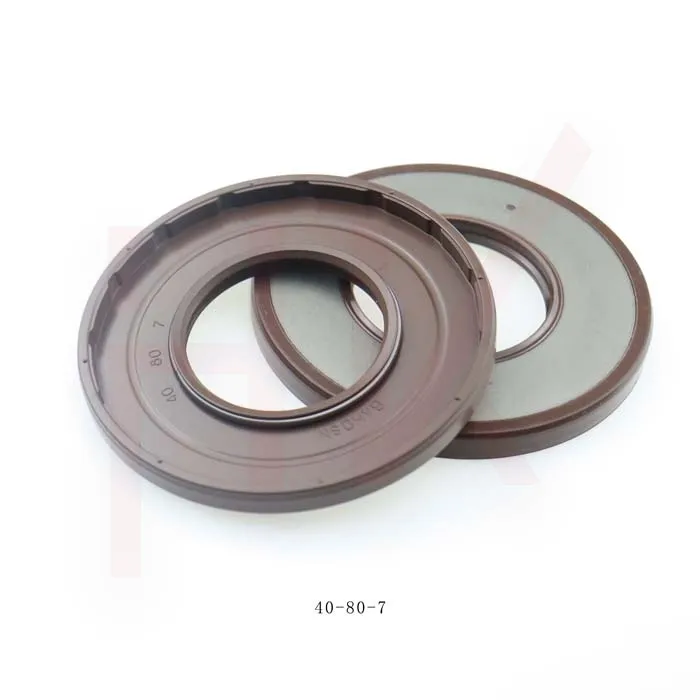Dec . 11, 2024 09:24 Back to list
Hydraulic Piston Seals for Efficient Oil Containment and System Performance
Understanding Hydraulic Piston Oil Seals Importance and Applications
Hydraulic systems are integral components in various industries, ranging from automotive to manufacturing and aerospace. At the heart of these systems, you will find hydraulic pistons, which help transfer hydraulic energy to perform work. However, the efficacy of these systems hinges significantly on the performance of hydraulic piston oil seals. This article delves into the importance, types, applications, and maintenance of hydraulic piston oil seals.
What Are Hydraulic Piston Oil Seals?
Hydraulic piston oil seals, often referred to simply as hydraulic seals, are specialized components designed to prevent the leakage of hydraulic fluids while maintaining pressure within hydraulic systems. These seals are typically made from materials like rubber, elastomers, or thermoplastics, which possess the ability to withstand high pressures, temperatures, and various chemical conditions found in hydraulic environments.
Importance of Hydraulic Piston Oil Seals
The primary role of hydraulic piston oil seals is to provide an effective sealing mechanism that prevents fluid from escaping the cylinder while also keeping contaminants out. The importance of hydraulic seals can be summarized as follows
1. Leak Prevention Hydraulic systems operate under high pressure, and any leak can lead to diminished performance, reduced efficiency, and potential system failure. Effective oil seals minimize such risks.
2. Contamination Protection Oil seals prevent dirt, moisture, and other contaminants from entering hydraulic systems, safeguarding the integrity of the hydraulic fluid and extending the system's lifespan.
3. Energy Efficiency By ensuring a tight seal, these components help maintain pressure, which is crucial in ensuring the system operates at peak efficiency. This results in better energy utilization and cost savings.
4. Safety A well-sealed hydraulic system mitigates the risk of accidents, as leaks could lead to hazardous situations, especially in settings such as construction sites and manufacturing plants.
Types of Hydraulic Piston Oil Seals
There are several types of hydraulic piston oil seals, each engineered for specific applications. Some of the most common types include
1. U-Cup Seals These are designed with a U-shaped profile and are commonly used in dynamic applications. Their shape allows for effective sealing in both directions, making them versatile.
2. O-Rings O-rings are circular seals that provide a reliable sealing mechanism in static and dynamic applications. They are often used in conjunction with other sealing elements.
3. V-Rings These seals are typically utilized for rotary applications and are effective at sealing against dust and dirt while allowing some axial movement.
hydraulic piston oil seals

4. Flat Seals These are used in situations where space is limited or when the surfaces being sealed are uneven.
Applications of Hydraulic Piston Oil Seals
The applications of hydraulic piston oil seals are vast. They are predominantly found in
- Automotive Industries In vehicles, hydraulic seals are used in braking systems, power steering, and suspension systems, ensuring safety and performance.
- Manufacturing In industrial settings, hydraulic seals are essential in machinery operation, such as injection molding machines and hydraulic presses.
- Aerospace The aviation industry relies on hydraulic seals in landing gear systems and flight control systems, where reliability is paramount.
- Construction Heavy machinery like excavators, bulldozers, and cranes utilize hydraulic seals to maintain operational efficiency under demanding conditions.
Maintenance of Hydraulic Piston Oil Seals
To ensure the longevity and performance of hydraulic piston oil seals, regular maintenance is crucial. Here are key tips for maintaining hydraulic seals
1. Regular Inspection Periodically check for signs of wear, deformation, or damage. Early detection of issues can save time and costs related to system failures.
2. Proper Installation Follow manufacturer guidelines during the installation process to avoid misalignment, which can lead to premature seal failure.
3. Use Quality Fluids The type of hydraulic fluid used can significantly impact seal performance. Ensure that the fluid is of high quality and compatible with the seal material.
4. Monitor System Pressure Keep an eye on pressure levels; excessive pressure can lead to seal failure.
Conclusion
Hydraulic piston oil seals play a pivotal role in the functionality and efficiency of hydraulic systems across various sectors. Understanding their importance, types, applications, and maintenance can help individuals and organizations optimize their hydraulic operations, ensuring safety, efficiency, and longevity. By prioritizing the integrity of these seals, industries can achieve operational excellence in their hydraulic applications.
-
TCN Oil Seal Metal Ring Reinforcement for Heavy Machinery
NewsJul.25,2025
-
Rotary Lip Seal Spring-Loaded Design for High-Speed Applications
NewsJul.25,2025
-
Hydraulic Cylinder Seals Polyurethane Material for High-Impact Jobs
NewsJul.25,2025
-
High Pressure Oil Seal Polyurethane Coating Wear Resistance
NewsJul.25,2025
-
Dust Proof Seal Double Lip Design for Construction Equipment
NewsJul.25,2025
-
Hub Seal Polyurethane Wear Resistance in Agricultural Vehicles
NewsJul.25,2025
-
The Trans-formative Journey of Wheel Hub Oil Seals
NewsJun.06,2025
Products categories
















